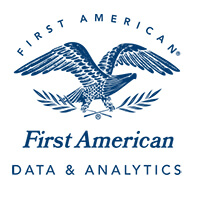As lenders seek to identify new opportunities to supplement their mortgage businesses, many are turning to home equity lending and increasing their work with government loan programs. Each of these potential sources of loan volume presents unique risk and compliance challenges at a time when many lenders have fewer resources to identify potential fraud, mitigate risk, and stay abreast of ever-changing compliance rules.
Given the current environment, many lenders are adopting sophisticated data and analytics tools, including artificial intelligence and machine learning, to support their operations. Technology- and data-driven origination and risk management solutions can help lenders decrease fraud risk and improve quality, especially in home equity lending.
Real estate data providers, like First American Data & Analytics, must be aware of emerging trends, continue to innovate to bring new, valuable solutions to the market while enhancing existing solutions in anticipation of customer needs. First American Data & Analytics has done just that – enhancing our FraudGuard solution’s already robust capabilities with new modules to help our clients continue to grow their businesses.
Mitigating Risk
Home equity lending is currently one of the few bright spots in the origination segment. In fact, TransUnion recently predicted that home equity lending will increase by nearly 25% in 2023 compared with 2022. Despite a recent dip in total home equity, Americans are still sitting on more than $27 trillion of equity, according to the Federal Reserve. Rather than refinance their historically low first mortgages, many homeowners are tapping into in their equity to pay off higher-interest debt, like credit cards and student loans, and to finance major life events, such as college tuition, home improvement projects or weddings, at interest rates that are much lower than traditional loans or credit cards.
While home equity loans are generally considered easier to originate than first mortgages, there are still several risk factors involved. Two of the biggest potential risks are accurately determining available equity and confirming that the lender’s lien is in second position.
While home equity lenders expect to find a first lien in place in most transactions, there are also certain types of ineligible first liens that could prevent a lender from moving forward with a second lien. Temporary bridge loans, for example, are gaining popularity because they enable buyers to make all-cash offers on their next home without selling their current one. Often these are balloon mortgages with a short maturity date that comes due before the amortization date. A private mortgage originated within the last 12 months, first mortgages with negative amortization, or a reverse mortgage would also fall into this category of ineligible first loans.
To help lenders identify these possible deal-breakers early in the origination process, First American Data & Analytics added a new senior lien module to our FraudGuard solution that alerts lenders to these issues. Developed to help lenders increase turnaround times without increasing risk, the new senior lien module helps determine loan eligibility at the time of application – accelerating time-to-close and avoiding potential risks that could result in massive fees or trigger expensive agency buybacks, which is important as origination costs increase.
Zero-Tolerance Compliance
Government loans, particularly VA and FHA home loans, are often preferred by first-time home buyers. During the refinance boom, many lenders and loan officers de-emphasized these programs in favor of easier-to-originate government-sponsored enterprise refinance loans. Now that purchase loans are often 75% of the volume at many lenders, many are rediscovering government lending programs and stepping up their outreach to qualified buyers.
Not only is this good business, but it is also something that regulators, like the Consumer Financial Protection Bureau (CFPB), are monitoring closely. For example, earlier this spring, a top CFPB director testified before Congress on the steps the CFPB is taking to monitor how lenders treat service members, veterans, and their families. The director reviewed enforcement actions that the CFPB has brought against a variety of lenders, including several mortgage companies, reiterating that they are watching servicers closely. Most importantly, this director referenced a 2022 study that found National Guard members and reservists often aren’t offered the Servicemembers Civil Relief Act (SCRA) benefits that they are entitled to receive.
Our FraudGuard solution’s new military status module provides lenders with a timely solution to help verify an applicant’s status (i.e., active, retired, or a survivor of military personnel) under the SCRA, allowing lenders to conveniently and efficiently comply with the law to protect service members and veterans. Our military status module can also be leveraged in consumer and automobile lending.
Staying Ahead of the Curve
Our industry is continually evolving. We adapt when the market is strong to meet demand, just as we pivot and acclimate during down cycles or to comply with new laws and regulations. What doesn’t change, however, is the need to find new solutions to stay ahead of increasing regulatory compliance and fraud risk. Partnering with quality data providers, like First American Data & Analytics, will help enhance accuracy, increase productivity and improve loan quality.
Paul W. Harris is general manager, mortgage analytics, for First American Data & Analytics.













